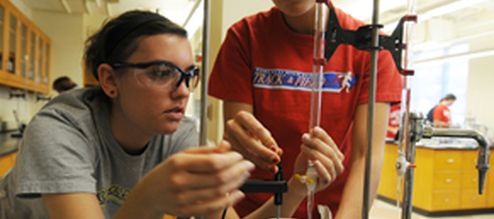DNA binding and nucleotide flipping by the human DNA repair protein AGT
Document Type
Article
Publication Date
6-27-2004
Publication Source
Nature Structural and Molecular Biology
Abstract
O6-alkylguanine-DNA alkyltransferase (AGT), or O6-methylguanine-DNA methyltransferase (MGMT), prevents mutations and apoptosis resulting from alkylation damage to guanines. AGT irreversibly transfers the alkyl lesion to an active site cysteine in a stoichiometric, direct damage reversal pathway. AGT expression therefore elicits tumor resistance to alkylating chemotherapies, and AGT inhibitors are in clinical trials. We report here structures of human AGT in complex with doublestranded DNA containing the biological substrate O6-methylguanine or crosslinked to the mechanistic inhibitor N1,O6ethanoxanthosine. The prototypical DNA major groove–binding helix-turn-helix (HTH) motif mediates unprecedented minor groove DNA binding. This binding architecture has advantages for DNA repair and nucleotide flipping, and provides a paradigm for HTH interactions in sequence-independent DNA-binding proteins like RecQ and BRCA2. Structural and biochemical results further support an unpredicted role for Tyr114 in nucleotide flipping through phosphate rotation and an efficient kinetic mechanism for locating alkylated bases.
Inclusive pages
714-720
ISBN/ISSN
1545-9993
Copyright
Copyright © 2004 Nature Publishing Group
Publisher
Nature Publishing Group
Volume
11
Peer Reviewed
yes
Issue
8
eCommons Citation
Daniels, Douglas S.; Woo, Tammy T.; Luu, Kieu X.; Noll, David M.; Clarke, Neil D.; Pegg, Anthony E.; and Tainer, John A., "DNA binding and nucleotide flipping by the human DNA repair protein AGT" (2004). Chemistry Faculty Publications. 88.
https://ecommons.udayton.edu/chm_fac_pub/88
COinS




Comments
Featured in: Begley, T. J. & Samson, L. D. "Reversing DNA damage with a directional bias." Nature Structural and Molecular Biology, Vol. 11 (2004), pp. 688-690.